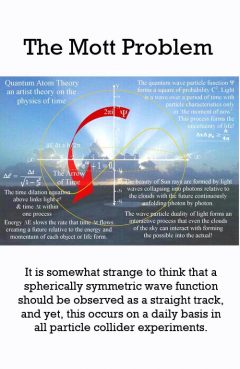The Mott Problem

Release Date: //
Country of Release:
Length:
MPAA:
Medium: Paradox
Genre:
Release Message: Spherically symmetric wave functions, when observed, produce linear particle tracks. Authored by Sir Nevill Francis Mott.
Description: In quantum mechanics, the Mott problem is a paradox that illustrates some of the difficulties of understanding the nature of wave function collapse and measurement in quantum mechanics. The problem was first formulated in 1929 by Sir Nevill Francis Mott and Werner Heisenberg, illustrating the paradox of the collapse of a spherically symmetric wave function into the linear tracks seen in a cloud chamber.:119ff In practice, virtually all high energy physics experiments, such as those conducted at particle colliders, involve wave functions which are inherently spherical. Yet, when the results of a particle collision are detected, they are invariably in the form of linear tracks (see, for example, the illustrations accompanying the article on bubble chambers). It is somewhat strange to think that a spherically symmetric wave function should be observed as a straight track, and yet, this occurs on a daily basis in all particle collider experiments. A related variant formulation was given in 1953 by Mauritius Renninger, and is now known as Renninger's negative-result gedanken experiment. In this formulation, it is noted that the absence of a particle detection can also constitute a quantum measurement; namely, that a measurement can be performed even if no particle whatsoever is detected.